Photo

Earth as Viewed From 10,000 Miles
“On November 9, 1967, the uncrewed Apollo 4 test flight made a great ellipse around Earth as a test of the translunar motors and of the high speed entry required of a crewed flight returning from the Moon. A 70mm camera was programmed to look out a window toward Earth, and take a series of photographs from "high apogee." Seen looking west are coastal Brazil, the Atlantic Ocean, West Africa and Antarctica. This photograph was made as the Apollo 4 spacecraft, still attached to the S-IVB (third) stage, orbited Earth at an altitude of 9,544 miles.” (Image credit: NASA)
#much apologies for the long inactivity#earth#apollo#apollo 4#apollo spacecraft#NASA#planets#photos#solar system
280 notes
·
View notes
Photo

Serene Saturn by Ian Regan (rotated for Tumblr viewing)
Taken by the Cassini spacecraft on October 28, Regan combined 21 total images (7 each for red, blue, and green filters) to create this mindblowing mosaic.
View the whole image and a little behind-the-scenes look on how this mosaic was made here.
5K notes
·
View notes
Photo










Monsoon III by photographer Mike Olbinski is a stunning collection of time-lapse videos showing how a monsoon forms. During the summer, the sun quickly warms the land. The air above it warms up as well so it rises and expands, turning into a low pressure system. Moisture-laden air from the oceans sweeps in, lifts up, condenses, and thus - storms are formed.
These gifs frankly do not give the video justice. Watch it on Vimeo.
1K notes
·
View notes
Photo
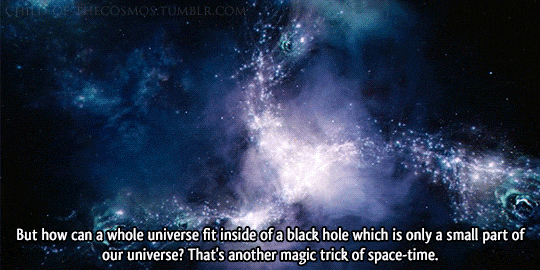



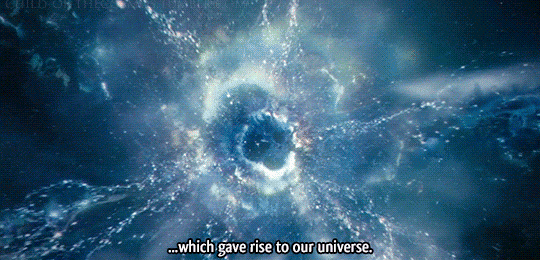



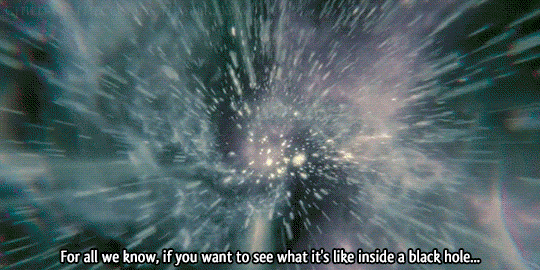

Black Holes: Part 3 of 3 (Part 1, Part 2) Episode 5: A Sky Full of Ghosts, Cosmos: A SpaceTime Odyssey
#cosmos: a spacetime odyssey#cosmos a spacetime odyssey#neil degrasse tyson#carl sagan#black holes#cosmos#cosmos gifs#astronomy#gifs#documentaryedit
5K notes
·
View notes
Photo

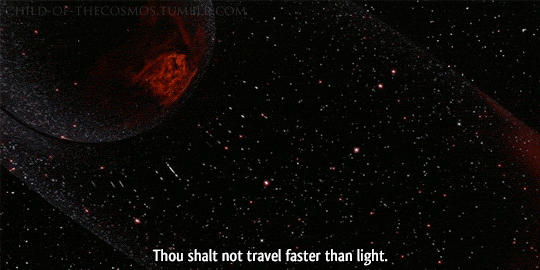
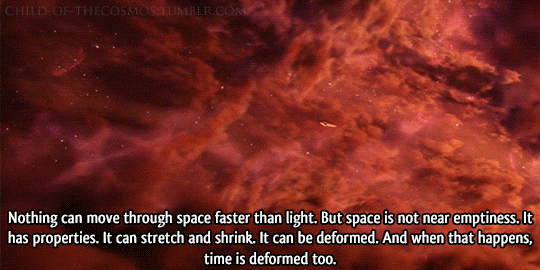




Black Holes: Part 2 of 3 (Part 1) Episode 5: A Sky Full of Ghosts, Cosmos: A SpaceTime Odyssey
#cosmos: a spacetime odyssey#cosmos a spacetime odyssey#neil degrasse tyson#carl sagan#black holes#cosmos#cosmos gifs#astronomy#gifs#documentaryedit
4K notes
·
View notes
Photo










Black Holes: Part 1 of 3 Episode 5: A Sky Full of Ghosts, Cosmos: A SpaceTime Odyssey
#cosmos: a spacetime odyssey#cosmos a spacetime odyssey#neil degrasse tyson#carl sagan#black holes#cosmos#cosmos gifs#astronomy#gifs#documentaryedit
2K notes
·
View notes
Photo




Learning the age of the Earth or the distance to the stars or how life evolves… what difference does that make?
Well, part of it depends on how big a universe you’re willing to live in. Some of us like it small. That’s fine. Understandable. But I like it big. And when I take all of these into my heart and my mind, I’m uplifted by it. And when I have that feeling, I want to know that it’s real, that it’s not just something happening inside my own head! Because it matters what’s true, and our imagination is nothing compared with nature’s awesome reality.
- Cosmos: A SpaceTime Odyssey, Episode 13: “Unafraid of the Dark”
#reblog#old posts#cosmos: a spacetime odyssey#cosmos a spacetime odyssey#neil degrasse tyson#cosmos gifs#science gifs
1K notes
·
View notes
Photo



The Bubble Nebula: Winds & Radiation from a Massive Star
Credit: HubbleSite.org
2K notes
·
View notes
Photo










The Light Year: Part 3 of 3 (Part 1, Part 2) Episode 5: A Sky Full of Ghosts, Cosmos: A SpaceTime Odyssey
#cosmos: a spacetime odyssey#cosmos a spacetime odyssey#neil degrasse tyson#light year#galaxies#cosmos#cosmos gifs#astronomy#gifs#documentaryedit
2K notes
·
View notes
Photo










The Light Year: Part 2 of 3 (Part 1) Episode 5: A Sky Full of Ghosts, Cosmos: A SpaceTime Odyssey
#cosmos: a spacetime odyssey#cosmos a spacetime odyssey#neil degrasse tyson#light year#crab nebula#pleiades#cosmos#cosmos gifs#astronomy#gifs#documentaryedit
1K notes
·
View notes
Photo

This is a picture of the 2015 US team that competed in the International Olympiad of Astronomy and Astrophysics (an international high school competition for astronomy) in Indonesia. One team member won honorable mention, two won bronze, and one won a silver medal.
A while ago, I had posted about the USAAAO. Well, the US Astronomy and Astrophysics Olympiad has come a long way since it was first founded almost 3 years ago - it has garnered interest among hundreds of high school students across the country, and last year’s team even snagged a silver medal, two bronze medals, and honorable mention last summer. But we need your help to strengthen the team even further against other top teams across the world.
We need a training camp to help prepare the top five students who will go on to the IOAA. The team needs a chance to work with each other before competing, and some portions of the competition, such as the telescope-involved parts, are nearly impossible to prepare for individually. MIT has agreed to host the summer camp if we can raise the funds to do so, so please consider donating! Every little bit helps! And if you can’t donate, please share this link so that words spreads and others can.
https://crowdfund.mit.edu/project/2341
1K notes
·
View notes
Photo



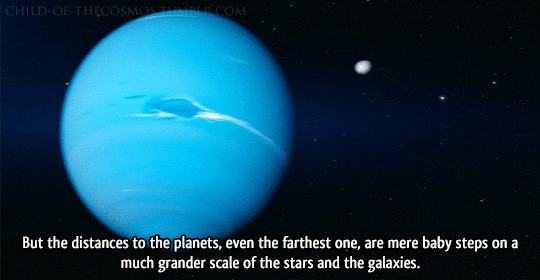





The Light Year: Part 1 of 3 Episode 5: A Sky Full of Ghosts, Cosmos: A SpaceTime Odyssey
#cosmos: a spacetime odyssey#cosmos a spacetime odyssey#neil degrasse tyson#carl sagan#voyager spacecraft#light year#cosmos#cosmos gifs#astronomy#gifs#documentaryedit
2K notes
·
View notes
Photo

“You're capable of such beautiful dreams, and such horrible nightmares. You feel so lost, so cut off, so alone, only you're not. See, in all our searching, the only thing we've found that makes the emptiness bearable, is each other.” - Carl Sagan, Contact
2K notes
·
View notes
Photo







It suddenly struck me that that tiny pea, pretty and blue, was the Earth. I put up my thumb and shut one eye, and my thumb blotted out the planet Earth. I didn't feel like a giant. I felt very, very small. - Neil Armstrong
The Curvature: Earth From Space [Watch the video]
2K notes
·
View notes
Video
youtube
100,000,000 Years From Now
For hundreds of years before the arrival of Spanish conquistadors, American cultures like the Aztecs, Mayans, and Incas flourished. Millions of people lived in sprawling cities full of sophisticated culture and technology. Yet today, just centuries after the last of these empires disappeared, we’re left with just a few traces of their time on Earth. Wait a few centuries more, and even less will remain. How can so much rich history just vanish?
Mainly because, for many reasons, these cultures were built out of stone and cloth rather than metal and glass. Fast forward a hundred thousand years or even a few million, and it’s not unlikely that the nearly all of humanity’s pre-industrial history, from Egypt to China to Europe to the Americas, will be invisible to future geologists for the same reasons. Soft stuff, ground to dust, just another rock.
But it will be different for us. Thanks to modern technology, we are the richest, healthiest, most comfortable, most mobile, most well-fed, and perhaps one of the most deadly species to ever live on this planet. As a result, the past 150 years or so have also reshaped our planet in some extreme ways, leaving impacts so deep and so transformative that future geologists, were they to analyze the layers of Earth’s crust, would see the beginning of a new geological epoch right around the time that you and I are alive: The Anthropocene.
Over the past few years, scientists have been arguing whether the Anthropocene is a real thing, or how big of a mark it will leave on a future Earth. But new research, released last month, has taken stock of humanity’s 20th century impact and declared that the Anthropocene is definitely real, and it will be unmistakable to future geologists.
This week, we look at these impacts, from plastic manufacturing and livestock breeding to chemical pollution and nuclear weapons, and attempt to draw a picture of what future explorers might see, what footprint we will leave for them, and what story they might tell of us.
Enjoy our latest video: 100,000,000 Years From Now

If you enjoyed this one, consider subscribing on YouTube and maybe sharing this video with a friend!
1K notes
·
View notes
Photo

Video [x]
3K notes
·
View notes
Photo





Flying Across The Universe Part 3 (From Top to Bottom: Fly through the Orion Nebula, Gum 29, and Sharpless 2-106)
(Part 1, Part 2)
Credit: HubbleSite.org
#space gifs#space#astronomy#astronomy gifs#orion nebula#gum 29#sharpless 2106#nebulae#Hubble Space Telescope#gifs
11K notes
·
View notes